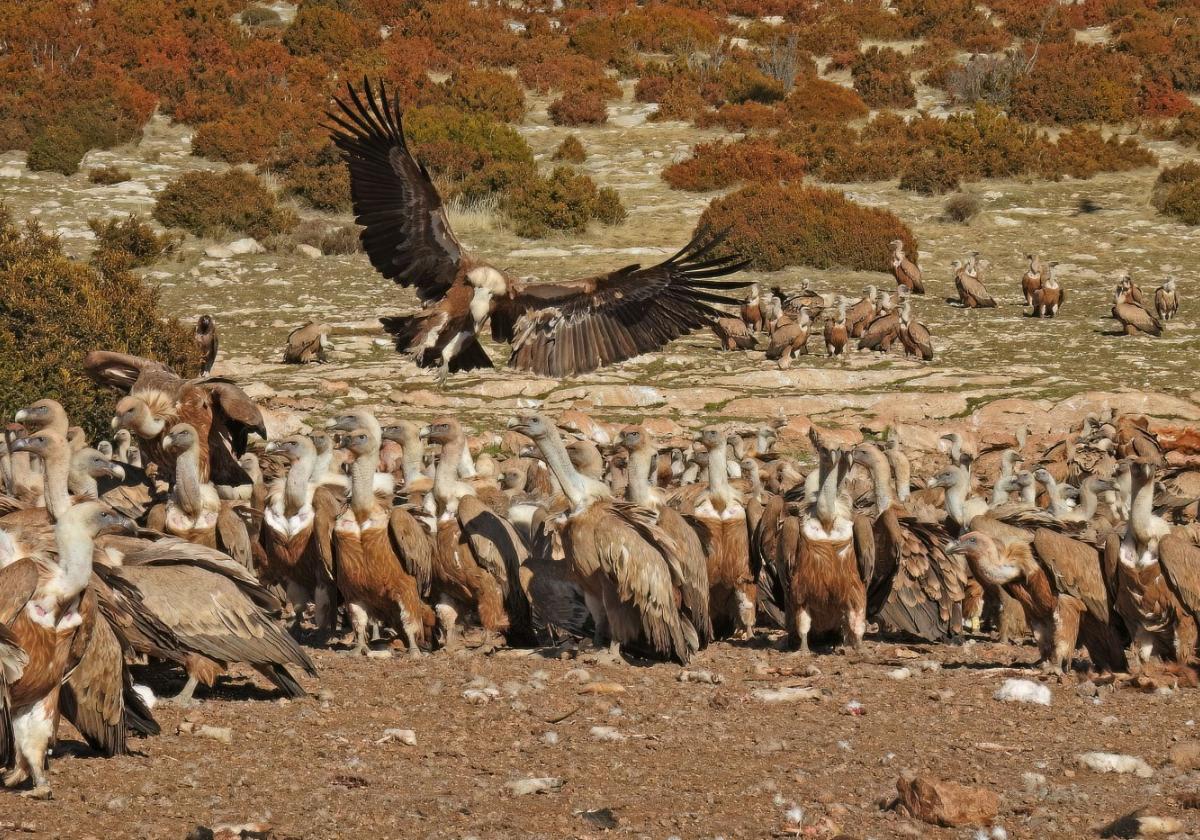The Griffon vulture
The Andalucía Bird Society recommends looking out for the Gyps fulvus this month
Peter Jones
Viernes, 19 de mayo 2023, 11:23
We are blessed to live in an area of Europe where we have among the highest densities of vulture populations on the continent. Not only ... the continent of Europe, but also within the Iberian Peninsula which holds the main breeding populations for Griffon, Black and Egyptian vulture, while it also has a healthy and increasing number of Lammergeier (Bearded vulture), Gypaetus barbatus, and the presence of Rüppell's vulture, Gyps rueppelli, all year round. Andalucía is a region of Spain that is also a vulture hotspot and for any fan of these wonderful birds it is the place to visit and be swept away by their grandeur and elegance as they dominate our skyline.
Since 2003 I have been studying birds within the areas of the Serranía de Ronda and Sierra de Grazalema. During this period there have been many changes to breeding populations and in particular with the local vultures.
The Egyptian vulture, Neophron percnopterus, once common, has declined, mostly due to incidences of poison baiting here as well as on their migration routes.
However, the trend for the Griffon vulture, Gyps fulvus, is the reverse. As an example, on a couple of adjoining rock faces that stand above the karst strewn slopes, there were four and three nests respectively in 2003, now there are nine and 13 nests, a dramatic increase. The observation is repeated throughout the area and most likely this is a result of various feeding stations providing food and the increase in livestock grazing in higher areas, with its accompanying natural mortality rates among herds.
The increase in Griffon vulture numbers has not been without some concerns and consequences, most prominently the displacement of Bonelli's eagle, Aquila fasciata, as they compete for nesting places.
Normally a Bonelli's eagle can hold its own and successfully defend a nesting site, but the sheer number of vultures has driven this eagle away from many sites.
There is also a welcome increase in breeding pairs of Golden eagle, Aquila chrysaetos, which also compete with Bonelli's eagle for nesting sites.
Another vulture that is increasing in the area, although somewhat less markedly as the Griffon vulture is the Black vulture, Aegypius monachus, otherwise called Cinereous vulture, Monk vulture or Eurasian black vulture.
In the past it has always been a regular winter visitor and involved juveniles dispersing from their natal grounds. In recent times, adult birds are now being observed at all times of the year, sometimes as many as eight individuals, seen together during the summer months. The area is vast and has many suitable forests or 'dehesa' areas where this bird may well choose to breed.
While it is so heartening to write some positive news, more particularly when it involves vultures, I am also aware of the struggles these birds are faced with in continental Africa and Asia.
Even here in Europe, particularly in Spain, these iconic and beneficial birds suffer from a range of dangers such as collisions with power cables and wind farms. Also Spain has incredulously licensed and approved the use of the lethal veterinary drug diclofenac on livestock which can kill scavenging birds.
Further to the positives are the local people here in the Serranía de Ronda and Sierra de Grazalema, they all regard the Griffon Vulture with affection; all know the bird's name 'Buitre Leonado' and will always point them out while in my company.
Another positive, although sad in many ways due to its demise, is virtually every farm I have visited during my studies have their own local name for Egyptian vulture.
¿Tienes una suscripción? Inicia sesión
